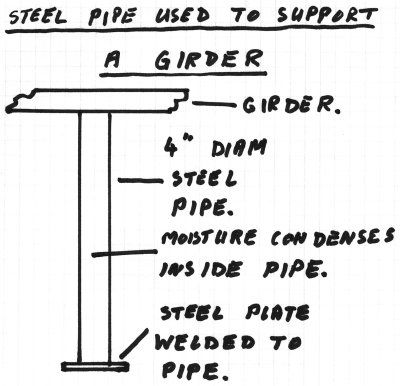If you have a partially full barrel of oil and keep it though several summer/winter temperature/humidity cycles you will usually find a layer of water at the bottom. During the summer humid air enters the air space above the oil and in the winter this moisture condenses and descends to the bottom of the barrel, where it remains trapped.

Now, bear with me, because there is a point to all this.
I have had a similar experience with a steel pipe with a plate welded to the bottom used to support a girder over my garage. Over a period of 30 years condensation within the pipe rusted the inside of the bottom of the pipe to the point where it fell over onto the floor!

This accumulation of water may happen in any nearly sealed enclosure subject to temperature/humidity cycles where the condensate cannot drain away.
I was therefore very interested to see a detail of the new Boeing battery box, as follows, “Finally, a set of changes is being made to the battery case that contains the battery cells and the battery management unit. Small holes at the bottom will allow moisture to drain away from the battery and larger holes on the sides will allow a failed battery to vent with less impact to other parts of the battery.”
Boeing Provides Details on 787 Battery Improvements - Mar 14, 2013
So maybe they think condensation had a role in the failures, and now there is to be no attempt to seal the battery box. Condensation will be allowed to drain out of the box. The stainless steel enclosure will be vented to the outside but otherwise sealed, and I suppose that enclosure will accumulate water just like my barrel of oil unless some provision is made for a drain. But at least the condensate will be in the enclosure and not in the battery box.
The Boston event occurred on Jan. 7, and I seem recall that the aircraft arrived from Narita, Japan, in the early morning when the temperature was around freezing. I Googled for “What is the average temperature in January in Narita Japan?”, and got a web-page which said, among other things, “Narita has a warm humid temperate climate with hot summers and no dry season.“ and "The month of January is characterized by gradually falling daily high temperatures (to about 30°F), with daily highs around 48°F throughout the month, exceeding 56°F or dropping below 41°F only one day in ten".
So was this aircraft regularly going to and fro from an area “with no dry season” to one with freezing conditions?